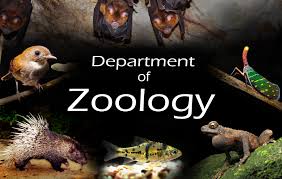Classification Of Phylum Porifera – Zoology Notes – For W.B.C.S. Examination.
ফাইলাম পোরিফেরা – প্রাণিবিদ্যানোট – WBCS পরীক্ষা।
There are about 5,000 living species of sponges included in this phylum Porifera. All the species of this phylum are grouped into three classes depending mainly on the nature of the skeleton. They are both marine and fresh water forms. They live up to a depth of 8,500 m in the sea. They generally flourish in the warm waters. In the matter of size they are highly variable. Their size may vary from few centimeters to several meters.Continue Reading Classification Of Phylum Porifera – Zoology Notes – For W.B.C.S. Examination.
Class I: Calcarea (L. Calcarius=limy)
- The sponges of this class are small.
- They all are exclusively marine forms living in shallow waters.
- Their skeleton is made up of calcareous spicules.
- Body many be cylindrical or vase like
- They may either live in colonies or solitarily
- Body organization may be asconoid, syconoid or leuconoid type.
- Development includes coeloblastula or amphiblastula larva
Ex: Clathrina, Leucosolenia, Scypha
Class II: Hexactanellida (Gr. Hex=six; Actin=ray)
- This class includes glass sponges.
- The sponges of this class are of moderate size.
- They all are exclusively marine forms living in deep waters.
- Their skeleton is made up of six-rayed siliceous spicules.
- Body may be cup, urn or vase like
- They may either live in colonies or solitarily.
- Development includes trichemella larva
Ex: Euplectella, Hyalonema
Class III: Desmospongiae (Gr. Demas=frame; Spongos=sponges)
- The sponges of this class are large sized.
- They include marine water or brackish water or fresh water forms
- Their skeleton is made up of siliceous spicules or sponging fibers or both or none.
- Body is vase or cup or cushion shaped
- They may either live solitarily or in colonies
- Body organization is leuconoid type
- Development includes parenchymula larva
Ex: Cliona, Spongia, Spongilla, Chalina
Our own publications are available at our webstore (click here).
For Guidance of WBCS (Exe.) Etc. Preliminary , Main Exam and Interview, Study Mat, Mock Test, Guided by WBCS Gr A Officers , Online and Classroom, Call 9674493673, or mail us at – mailus@wbcsmadeeasy.in
Visit our you tube channel WBCSMadeEasy™ You tube Channel
Please subscribe here to get all future updates on this post/page/category/website



 Toll Free 1800 572 9282
Toll Free 1800 572 9282  mailus@wbcsmadeeasy.in
mailus@wbcsmadeeasy.in


















































































































